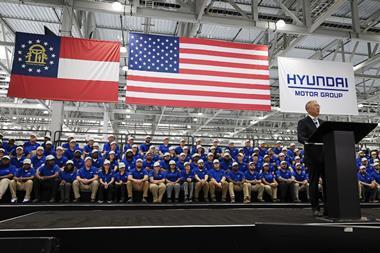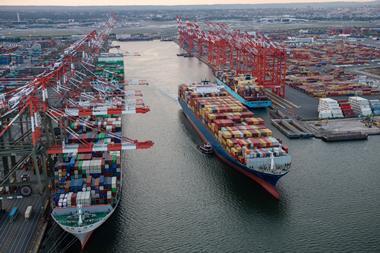
Heavy snow affected areas over a large region as the storm, dubbed Nemo, moved from North Jersey and inland from New York City through eastern New England up to the coast of Maine and inland to Ontario.
But on the roads, logistics providers were well prepared. Ryder executives said that because the storm arrived when it did, most of its business had been concluded for the week. According to Mark Cicchini, Ryder’s vice president of operations for fleet management solutions, customers and employees had listened to the state emergency department alerts about when to be off the roads, which meant the company was able to bring in a “very controlled” shutdown.
“We implemented our usual pre-winter storm check list for our maintenance facilities – things like confirming with snow removal providers when they could get to our facilities,” said Cicchini. “We also have a very strategic process for moving our trucks around at each location to plan for the snow removal process – we move and station vehicles differently so the snow plows can get in and have a place to push the snow so it doesn’t block traffic in and out of our shops.”
Dick Jennings, vice-president of automotive for the company’s Supply Chain Solutions, concurred. “There are plans in place to cover these situations, which were implemented especially at the tail end of the week,” he told Automotive Logistics News. “Usually the auto makers respond and we implement the plans.?Typically there are workarounds or pull ahead of inventory for a day or two before the storms.”
Ryder’s precautions involved moving service vehicles inside ready for deployment for customers once businesses reopen, ordering additional fuel supplies and maintaining lines of communication with all employees.
“We had no power outages, no damage to facilities and no employees affected,” added Cicchini.
Schneider National, meanwhile, said that it had maintained communication with its drivers throughout the weekend to ensure their safety and travel had become more fluid since the wider deployment of snow removal equipment on Sunday.
“We haven’t seen a material increase in the number of shipments destined to the area in response to the storm,” said a spokesperson for the company.
Schneider said that it was now working on confirming which of its customers affected by the power cuts had power restored and were able to ship and receive goods. It was assessing which facilities it could gain access to based on snow removal progress as some customer facilities are still being dug out.
“Some secondary roads we would use to get from the interstates to shippers and consignees are in the process of being dug out and thus slow going,” said the Schneider spokesperson. “Our drivers are using their judgment and training to successfully navigate at the local level.”
The major North American carmakers confirmed that they had prepared ahead of the storm to avoid any supply problems to their manufacturing plants. “We have not experienced any disruptions as a result of the storm,” confirmed a spokesperson for Chrysler. “We did proactively pull ahead some shipments before the storm in an effort to mitigate risk.”
Ford said it had not been affected and on the outbound side GM said it was still collecting data on the impact to its dealerships.
Ports on the Northeast coast appear to have also beaten the worst affects of the storm thanks to their own contingency planning.
The relatively mild impacts of the storm contrast with the devastation and disruption caused last November by ‘super storm’ Sandy, which deprived large parts of the northeast of power for weeks, wreaked havoc on transport infrastructure, and caused millions of dollars in damage to vehicle inventory at ports and at dealers (read more here).
The Port Authority of New York and New Jersey (PANYNJ) took extensive measures ahead of Nemo to minimise disruption including the deployment of 1,000 trained staff and assembling snow-fighting equipment to deal with adverse conditions at its air and sea ports, tunnels, bridges and PATH system. More than 200 pieces of snow and ice equipment were put in place at the airports and 60 more at bridges and tunnels feeding the area. The authority also reported providing more than 2,000 tons of salt and more than 1,500 tons of sand for airport roads and parking lots, plus more than 2,000 tons of salt for the bridges and tunnels. A spokesman for PANYJI said that it had done “an excellent job” preparing and cleaning up and that no restrictions or closures to terminal operations at the ports had to be imposed.
The railroads also avoided major disruption, including Norfolk Southern and CSX, which reported no major disruptions.

























![Global[1]](https://d3n5uof8vony13.cloudfront.net/Pictures/web/a/d/s/global1_726550.svgz)










